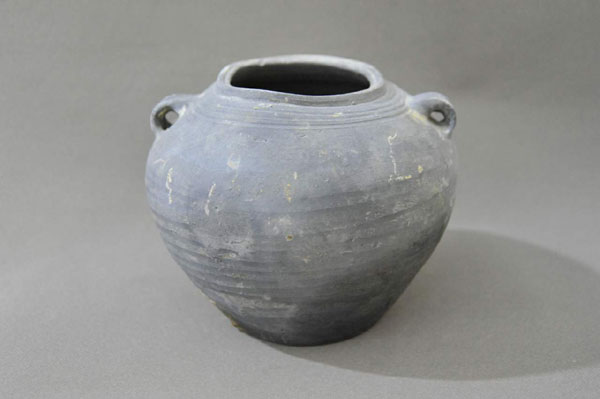

"The rhino might have been pushed into the pit in the early Jin Dynasty after the Shu Kingdom was toppled during the Three Kingdoms period, for the Jin ruler wanted to wipe out the cultural influence of the Shu Kingdom," Yi says.
The stone rhino is on display at Jinsha Site Museum in the city's western suburbs. The exhibition, which ends on Feb 28, has attracted thousands of visitors especially during the Spring Festival holidays.
Among them is Fu Changhua, an 87-year-old Chengdu resident.
"I have been looking forward to seeing the stone rhino for four decades," says Fu, a fervent lover of cultural relics. "When the city built the Chengdu Telecommunication Building in 1973, workers found the stone rhino but had to rebury it because they had only basic tools which could not pull the gigantic beast out," he says.
With more sophisticated tools now, archaeologists managed
Researchers say its discovery can help explain what Tianfu Square, which is near the busiest commercial streets in Sichuan, was like in ancient days.
"As soft river sand was discovered in the pit where the stone beast was found, it can be inferred that the place used to be a river," says Lin Xiang, an 81-year-old professor of archaeology at Sichuan University.
Another expert, 82-year-old Feng Guanghong, says in ancient days, people believed that evil spirits feared the rhino.
A professor with the Sichuan Provincial Academy of Water Conservation, Feng opines that more than 2,000 years ago, Li Bing - an administrator of the State of Qin during the Warring States Period - built five stone rhino statues to suppress evil spirits that caused floods.
Wang Yi, chief of the Chengdu Archaeological Institute, says although the stone rhino is the earliest and largest round stone carving ever discovered in Sichuan, further studies are needed to establish the link between the stone rhino and Li Bing.
According to Zhu Cheng, a famous
"It's rare for people in the olden days to use primitive tools to create such a work of art on a single piece of stone," he says.
There is an old saying related to Zhang Xianzhong (1606-47), a leader of a farmer's revolt who established the Daxi kingdom in Chengdu in 1644 after the fall of the Ming Dynasty, that goes: "If one finds a stone ox and a stone drum, he can find silver which can buy half of Chengdu."
According to one legend, Zhang buried his treasure trove and marked it with a stone ox and a stone drum before he fled Chengdu, when the Manchus attacked him.
"The word rhino reads xi niu in Chinese. Niu means ox in Chinese. So, many visitors associate the stone rhino with the stone ox in the old saying and visit the Jinsha Site Museum," says Fu Changhua, the Chengdu resident, on why the exhibition has attracted so many visitors.
Contact the writer at huangzhiling@chinadaily.com.cn.